Abstract
Human genetic maps have made quantum leaps in the past few years, because of the characterization of > 2,000 CA dinucleotide repeat loci: these PCR-based markers offer extraordinarily high PIC, and within the next year their density is expected to reach intervals of a few centimorgans per marker. These new genetic maps open new avenues for disease gene research, including large-scale genotyping for both simple and complex disease loci. However, the allele patterns of many dinucleotide repeat loci can be complex and difficult to interpret, with genotyping errors a recognized problem. Furthermore, the possibility of genotyping individuals at hundreds or thousands of polymorphic loci requires improvements in data handling and analysis. The automation of genotyping and analysis of computer-derived haplotypes would remove many of the barriers preventing optimal use of dense and informative dinucleotide genetic maps. Toward this end, we have automated the allele identification, genotyping, phase determinations, and inheritance consistency checks generated by four CA repeats within the 2.5-Mbp, 10-cM X-linked dystrophin gene, using fluorescein-labeled multiplexed PCR products analyzed on automated sequencers. The described algorithms can deconvolute and resolve closely spaced alleles, despite interfering stutter noise; set phase in females; propagate the phase through the family; and identify recombination events. We show the implementation of these algorithms for the completely automated interpretation of allele data and risk assessment for five Duchenne/Becker muscular dystrophy families. The described approach can be scaled up to perform genome-based analyses with hundreds or thousands of CA-repeat loci, using multiple fluorophors on automated sequencers.
Full text
PDF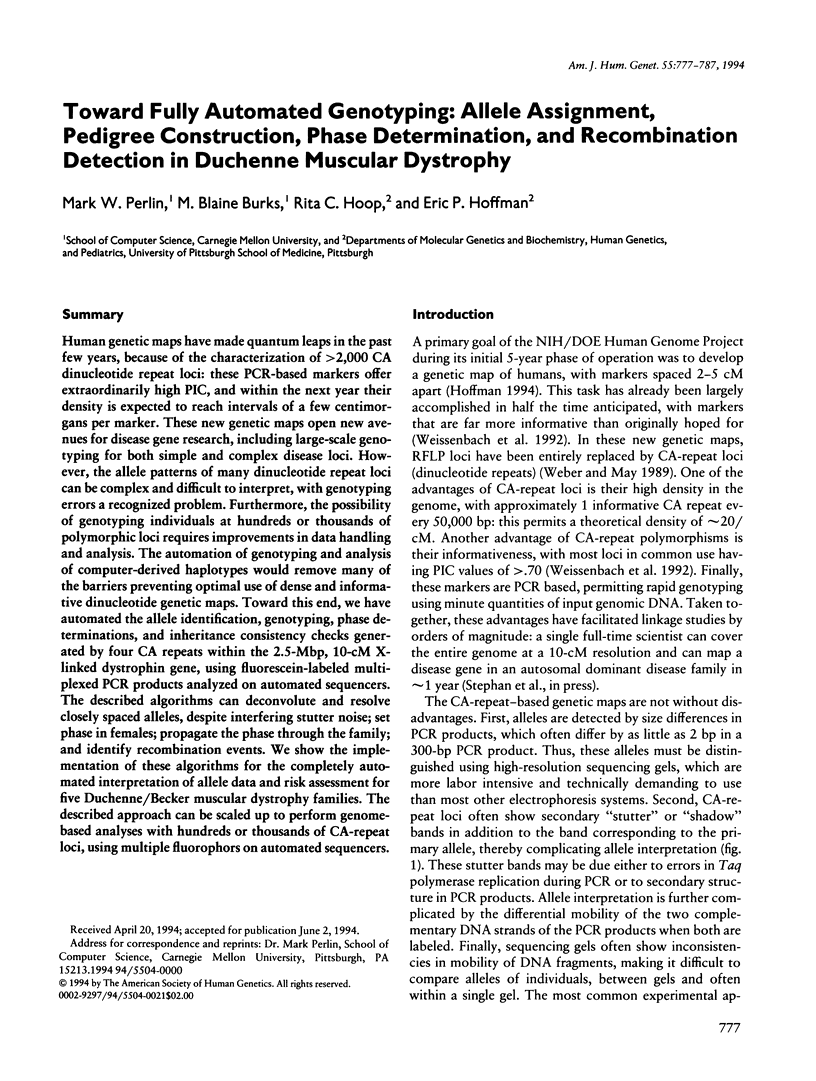
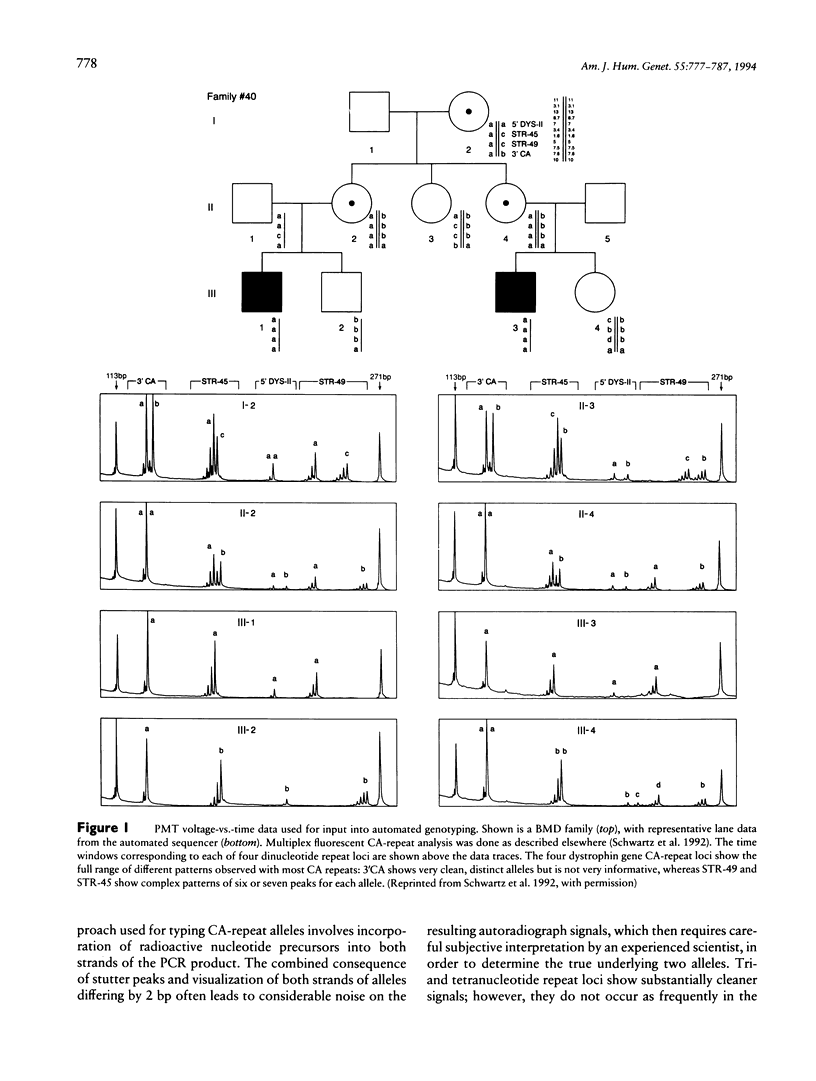
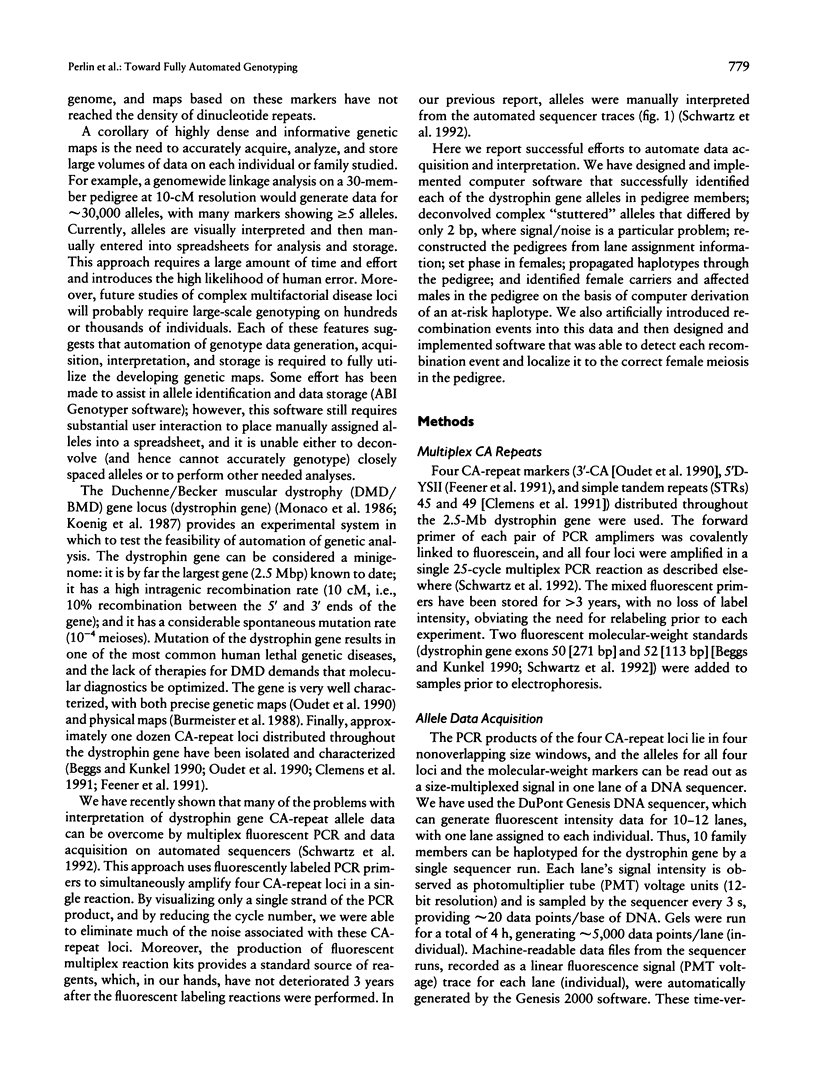
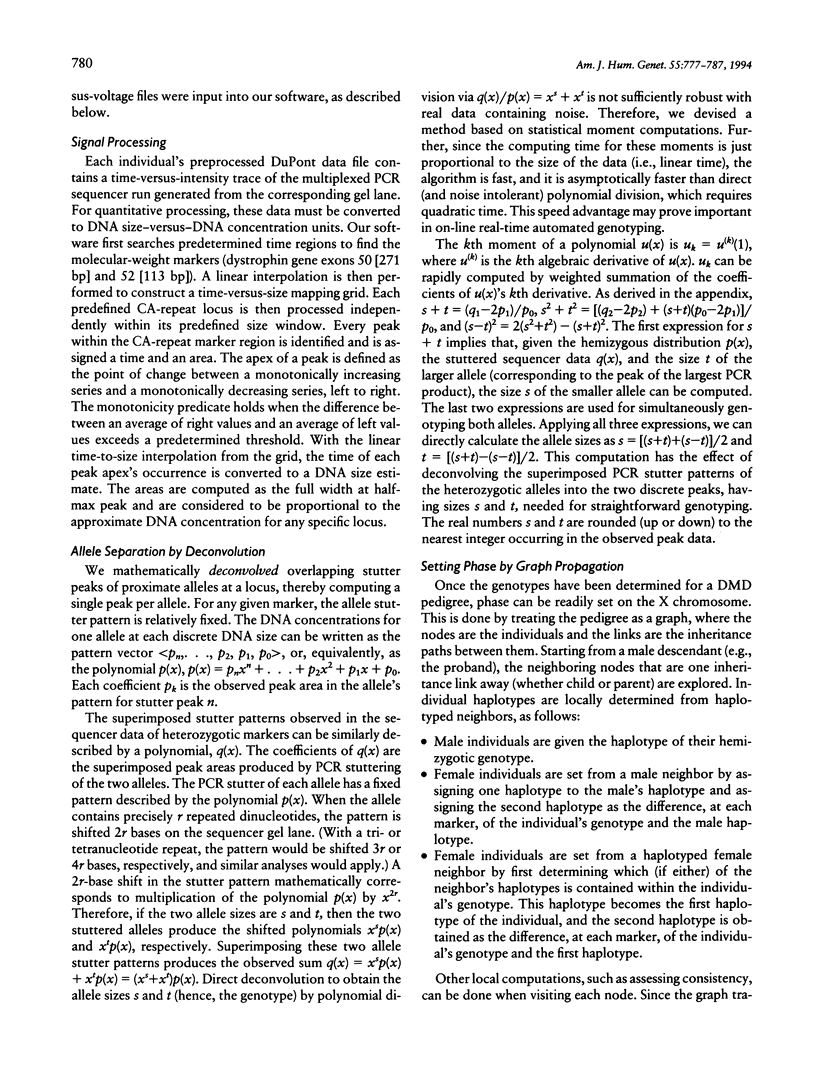
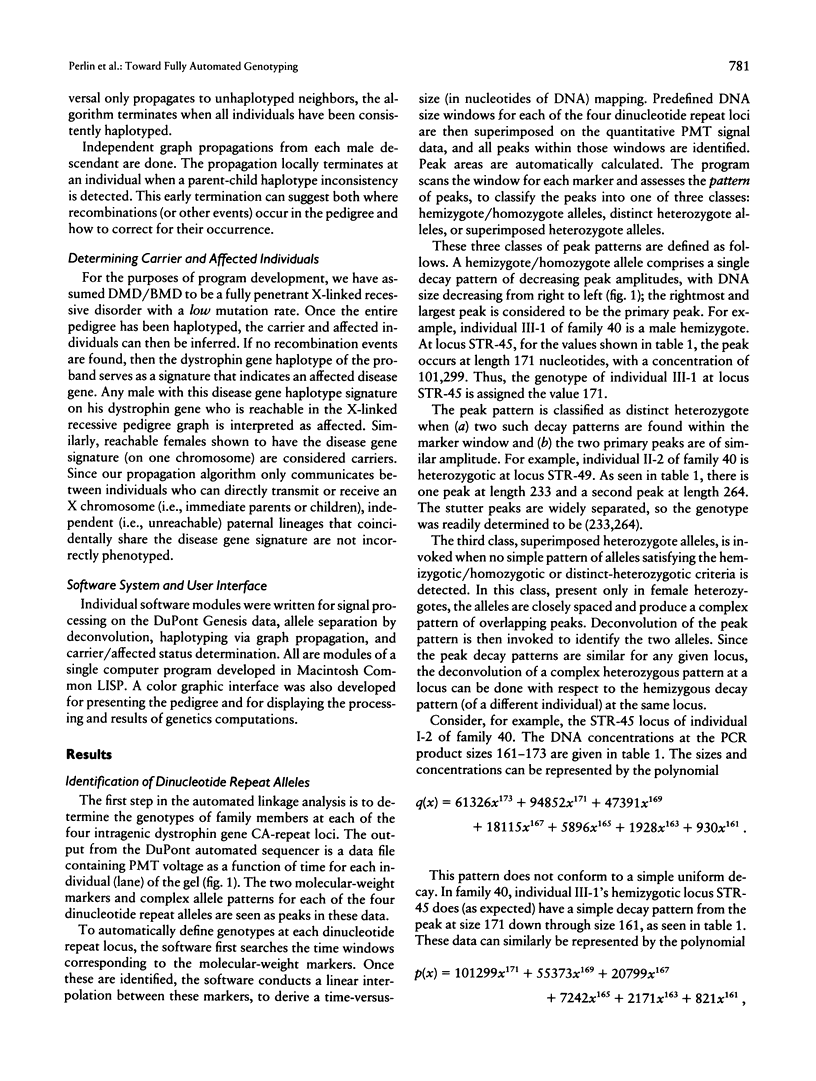
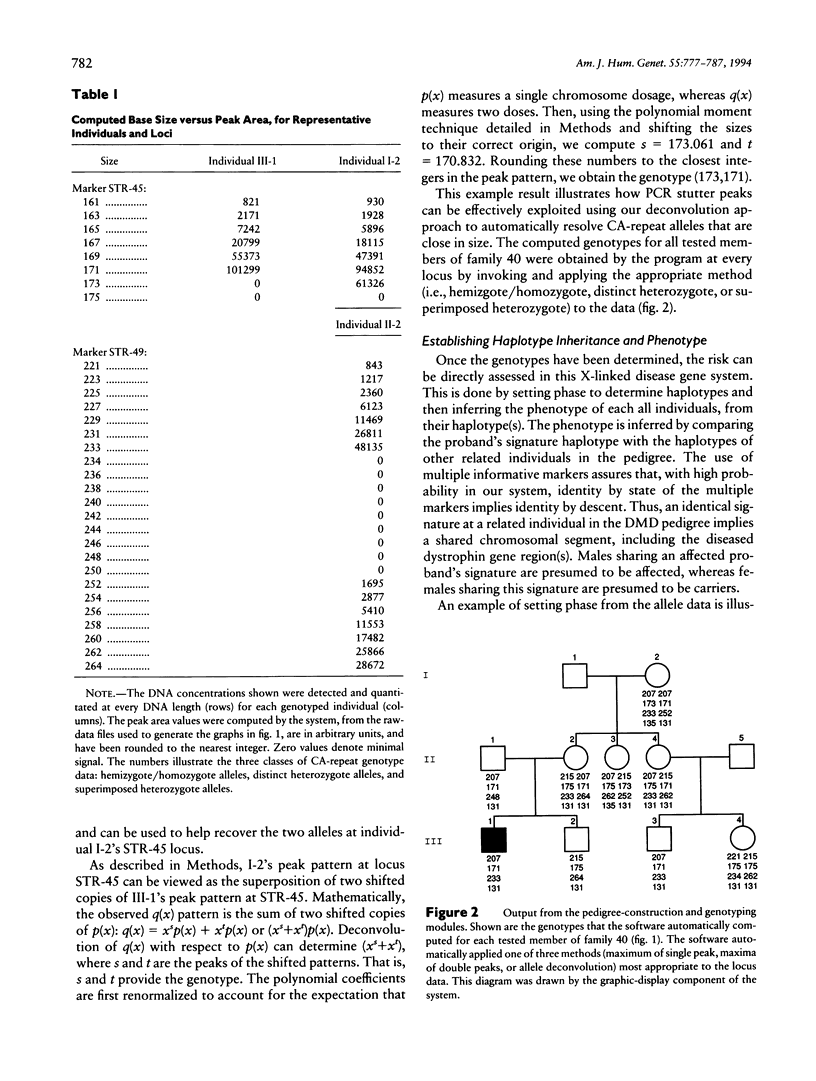
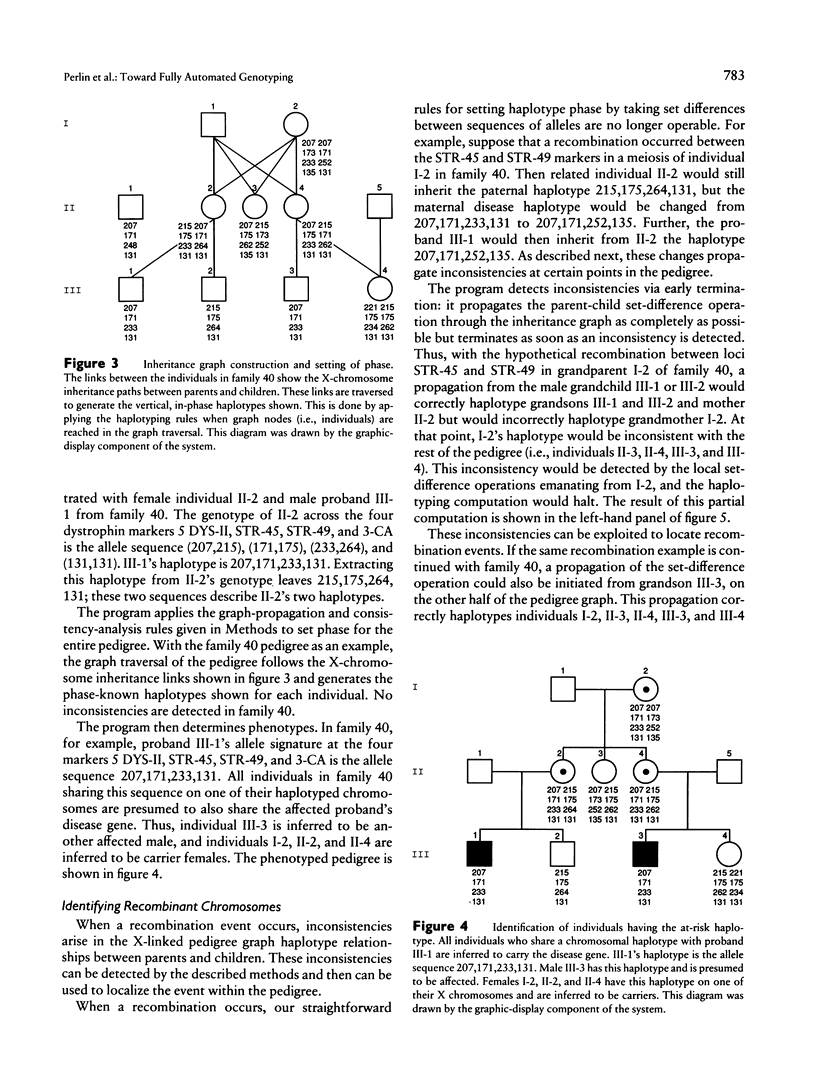
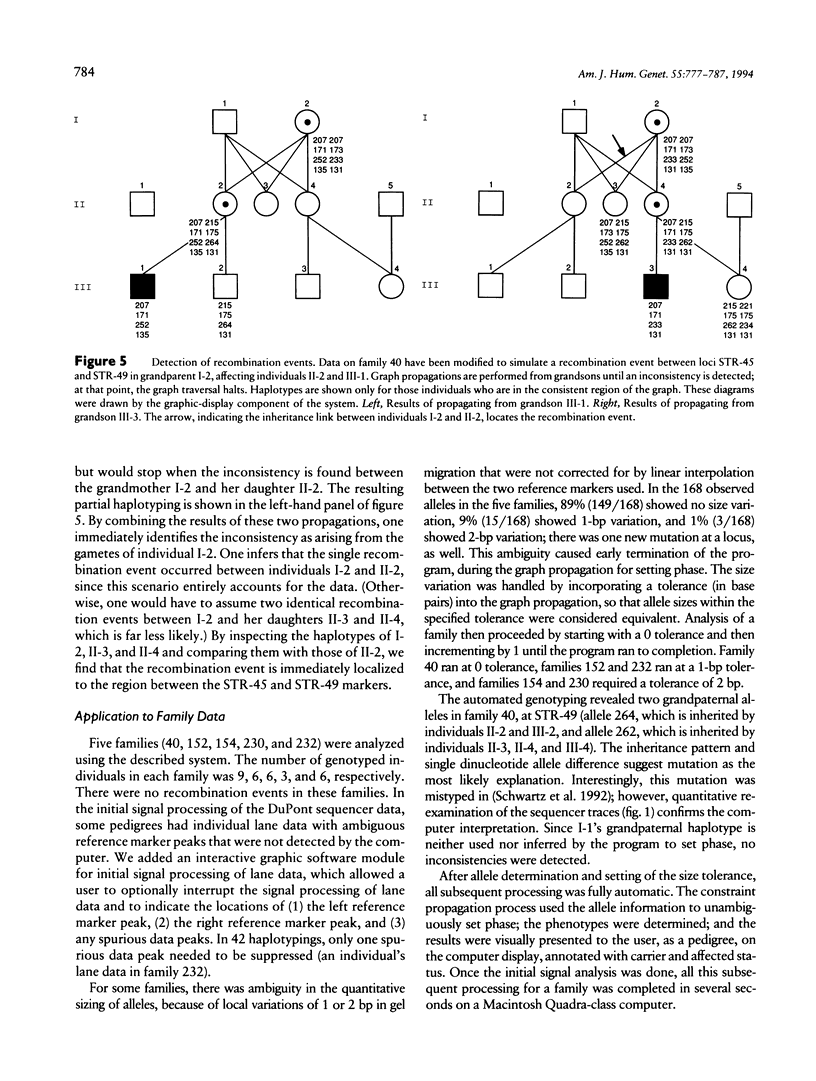
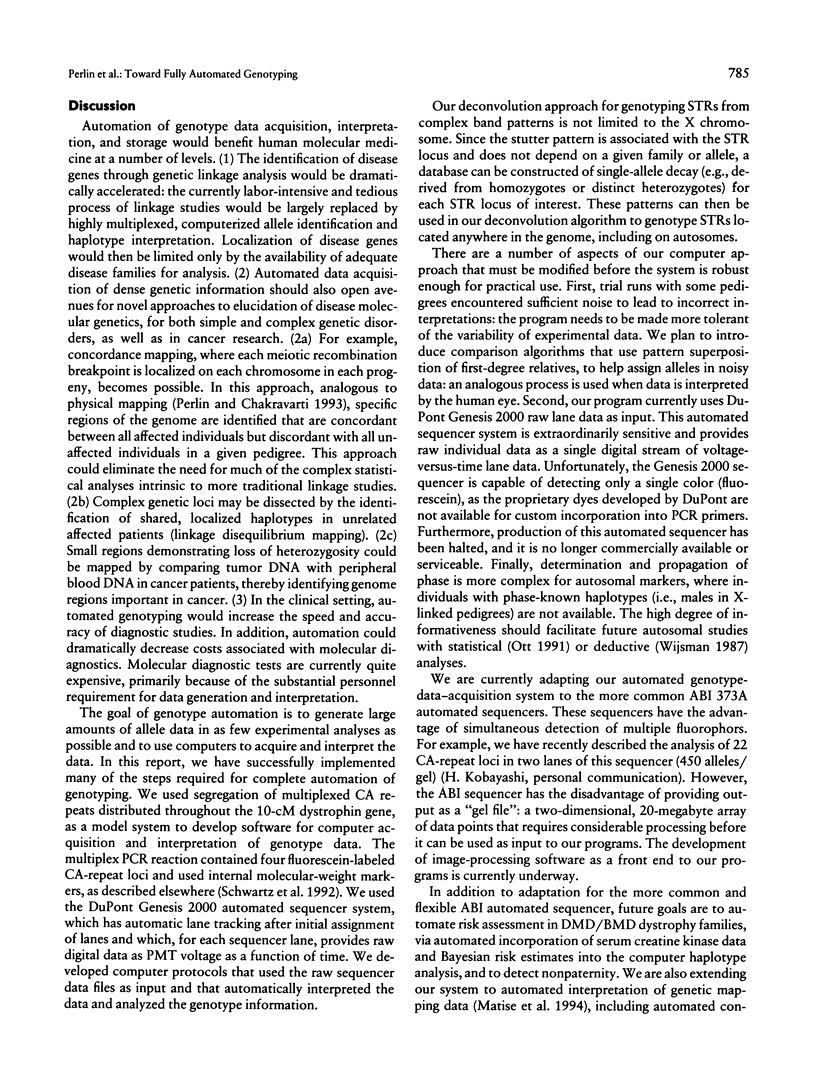

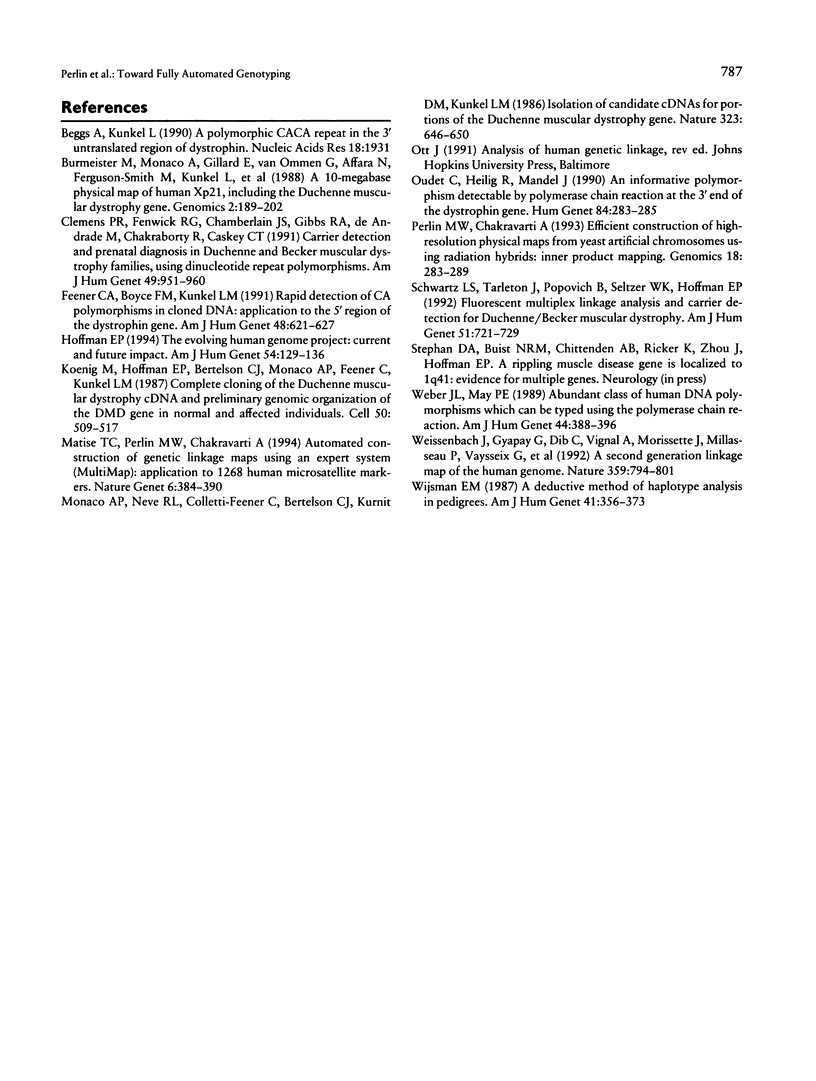
Selected References
These references are in PubMed. This may not be the complete list of references from this article.
- Beggs A. H., Kunkel L. M. A polymorphic CACA repeat in the 3' untranslated region of dystrophin. Nucleic Acids Res. 1990 Apr 11;18(7):1931–1931. doi: 10.1093/nar/18.7.1931. [DOI] [PMC free article] [PubMed] [Google Scholar]
- Burmeister M., Monaco A. P., Gillard E. F., van Ommen G. J., Affara N. A., Ferguson-Smith M. A., Kunkel L. M., Lehrach H. A 10-megabase physical map of human Xp21, including the Duchenne muscular dystrophy gene. Genomics. 1988 Apr;2(3):189–202. doi: 10.1016/0888-7543(88)90002-x. [DOI] [PubMed] [Google Scholar]
- Clemens P. R., Fenwick R. G., Chamberlain J. S., Gibbs R. A., de Andrade M., Chakraborty R., Caskey C. T. Carrier detection and prenatal diagnosis in Duchenne and Becker muscular dystrophy families, using dinucleotide repeat polymorphisms. Am J Hum Genet. 1991 Nov;49(5):951–960. [PMC free article] [PubMed] [Google Scholar]
- Feener C. A., Boyce F. M., Kunkel L. M. Rapid detection of CA polymorphisms in cloned DNA: application to the 5' region of the dystrophin gene. Am J Hum Genet. 1991 Mar;48(3):621–627. [PMC free article] [PubMed] [Google Scholar]
- Hoffman E. P. The Evolving Genome Project: current and future impact. Am J Hum Genet. 1994 Jan;54(1):129–136. [PMC free article] [PubMed] [Google Scholar]
- Koenig M., Hoffman E. P., Bertelson C. J., Monaco A. P., Feener C., Kunkel L. M. Complete cloning of the Duchenne muscular dystrophy (DMD) cDNA and preliminary genomic organization of the DMD gene in normal and affected individuals. Cell. 1987 Jul 31;50(3):509–517. doi: 10.1016/0092-8674(87)90504-6. [DOI] [PubMed] [Google Scholar]
- Matise T. C., Perlin M., Chakravarti A. Automated construction of genetic linkage maps using an expert system (MultiMap): a human genome linkage map. Nat Genet. 1994 Apr;6(4):384–390. doi: 10.1038/ng0494-384. [DOI] [PubMed] [Google Scholar]
- Monaco A. P., Neve R. L., Colletti-Feener C., Bertelson C. J., Kurnit D. M., Kunkel L. M. Isolation of candidate cDNAs for portions of the Duchenne muscular dystrophy gene. Nature. 1986 Oct 16;323(6089):646–650. doi: 10.1038/323646a0. [DOI] [PubMed] [Google Scholar]
- Oudet C., Heilig R., Mandel J. L. An informative polymorphism detectable by polymerase chain reaction at the 3' end of the dystrophin gene. Hum Genet. 1990 Feb;84(3):283–285. doi: 10.1007/BF00200576. [DOI] [PubMed] [Google Scholar]
- Perlin M., Chakravarti A. Efficient construction of high-resolution physical maps from yeast artificial chromosomes using radiation hybrids: inner product mapping. Genomics. 1993 Nov;18(2):283–289. doi: 10.1006/geno.1993.1467. [DOI] [PubMed] [Google Scholar]
- Schwartz L. S., Tarleton J., Popovich B., Seltzer W. K., Hoffman E. P. Fluorescent multiplex linkage analysis and carrier detection for Duchenne/Becker muscular dystrophy. Am J Hum Genet. 1992 Oct;51(4):721–729. [PMC free article] [PubMed] [Google Scholar]
- Weber J. L., May P. E. Abundant class of human DNA polymorphisms which can be typed using the polymerase chain reaction. Am J Hum Genet. 1989 Mar;44(3):388–396. [PMC free article] [PubMed] [Google Scholar]
- Weissenbach J., Gyapay G., Dib C., Vignal A., Morissette J., Millasseau P., Vaysseix G., Lathrop M. A second-generation linkage map of the human genome. Nature. 1992 Oct 29;359(6398):794–801. doi: 10.1038/359794a0. [DOI] [PubMed] [Google Scholar]
- Wijsman E. M. A deductive method of haplotype analysis in pedigrees. Am J Hum Genet. 1987 Sep;41(3):356–373. [PMC free article] [PubMed] [Google Scholar]


